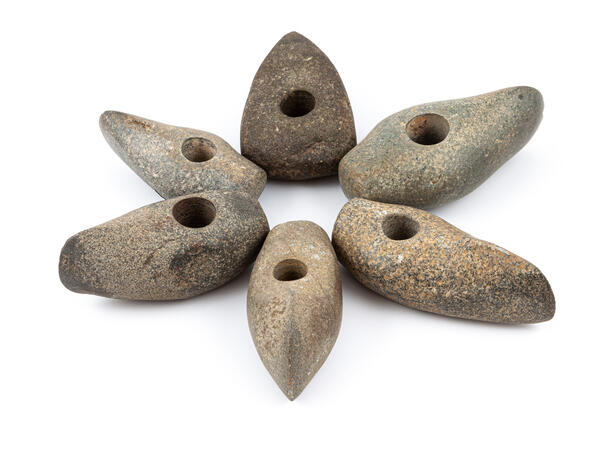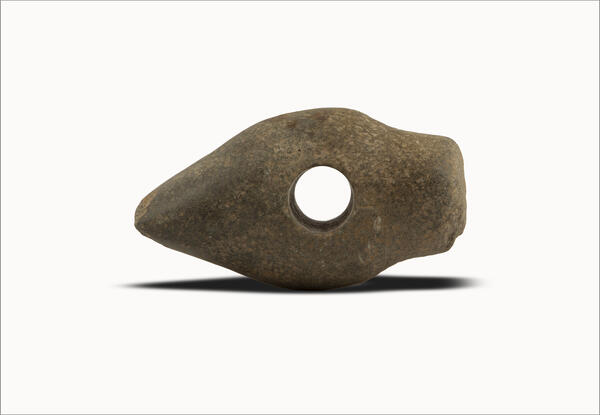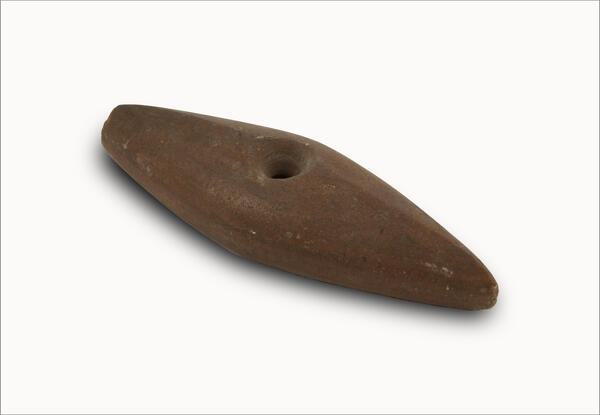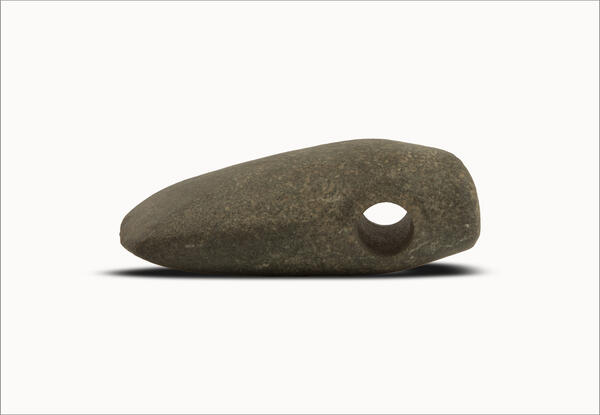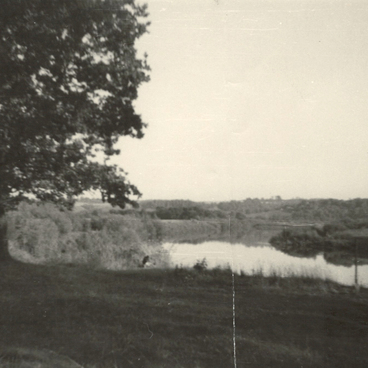The growing number of forests caused by a warming climate forced people to invent chopping tools in order to cope with the changing environment. The process of making axes began with the selection of a suitable fragment. Craftsmen used stones of various types and origins — from local sedimentary rocks to fragments of rocks carried by glaciers.
After that, a blank was formed for a future ax, taking the necessary shape and size. This was made through rough shaping with a chipper or flint tool using a wooden or horn mallet. The blank was prepared for grinding by chopping off excess material with precise strokes.
One of the most important techniques invented in the primitive era was drilling, which was used for making both fire and tools. In the Paleolithic and Neolithic eras, the method of using both hands was prevalent: drilling was performed by rotating a wooden rod with a flint point.
Changes were introduced to stone drilling in the Neolithic period when the bow drilling method appeared. It became possible to make conical and biconical holes in a product. However, such holes could not provide a solid connection between wooden handles and percussive weapons, such as maces, hammers, and axes.
Over time, people realized that only cylindrical holes offered reliable fastening, and this shape eventually became a prevalent one during the Neolithic and Bronze Ages. Drilling could be done with a horn tool, a tubular animal bone, or a hollow wooden rod, and used sand abrasive. It was the abrasive, pushed by a hollow sleeve, that cut the stone.
Abrasive processing, in other words grinding, in making stone tools was regularly used from the early Neolithic. This was due to the increasing role of wood as a building material and its wider use in the primitive economy. With the advent of grinding and the abrasive sharpening technique, an ax became a tool that humanity could no longer do without.
After that, a blank was formed for a future ax, taking the necessary shape and size. This was made through rough shaping with a chipper or flint tool using a wooden or horn mallet. The blank was prepared for grinding by chopping off excess material with precise strokes.
One of the most important techniques invented in the primitive era was drilling, which was used for making both fire and tools. In the Paleolithic and Neolithic eras, the method of using both hands was prevalent: drilling was performed by rotating a wooden rod with a flint point.
Changes were introduced to stone drilling in the Neolithic period when the bow drilling method appeared. It became possible to make conical and biconical holes in a product. However, such holes could not provide a solid connection between wooden handles and percussive weapons, such as maces, hammers, and axes.
Over time, people realized that only cylindrical holes offered reliable fastening, and this shape eventually became a prevalent one during the Neolithic and Bronze Ages. Drilling could be done with a horn tool, a tubular animal bone, or a hollow wooden rod, and used sand abrasive. It was the abrasive, pushed by a hollow sleeve, that cut the stone.
Abrasive processing, in other words grinding, in making stone tools was regularly used from the early Neolithic. This was due to the increasing role of wood as a building material and its wider use in the primitive economy. With the advent of grinding and the abrasive sharpening technique, an ax became a tool that humanity could no longer do without.

